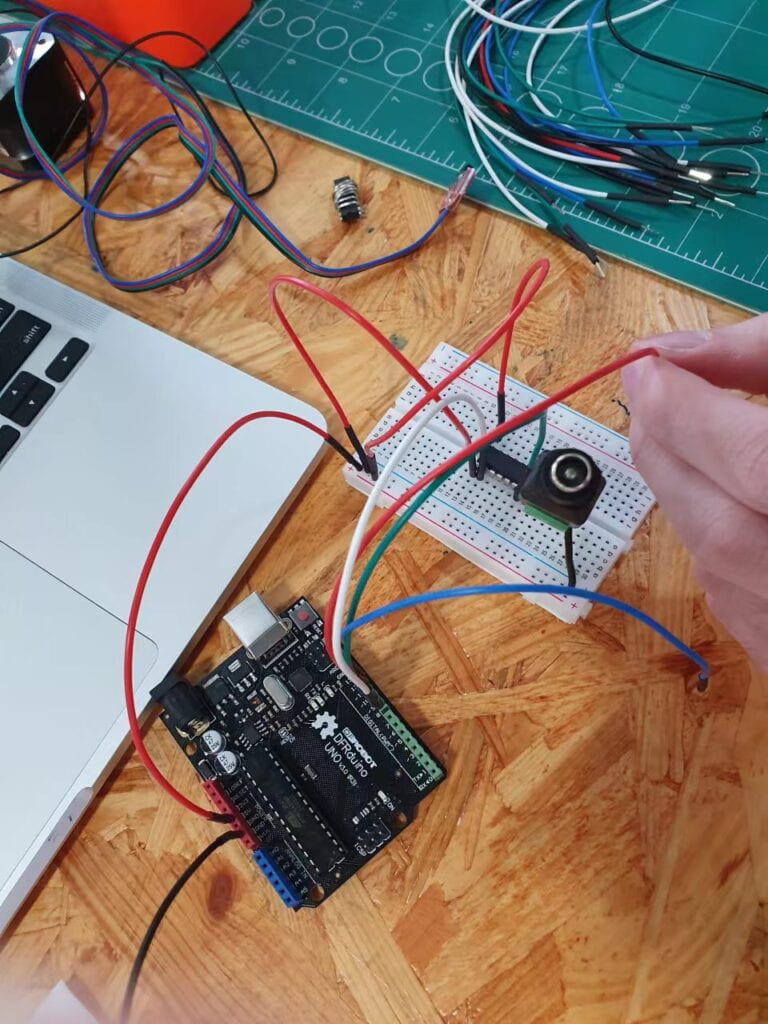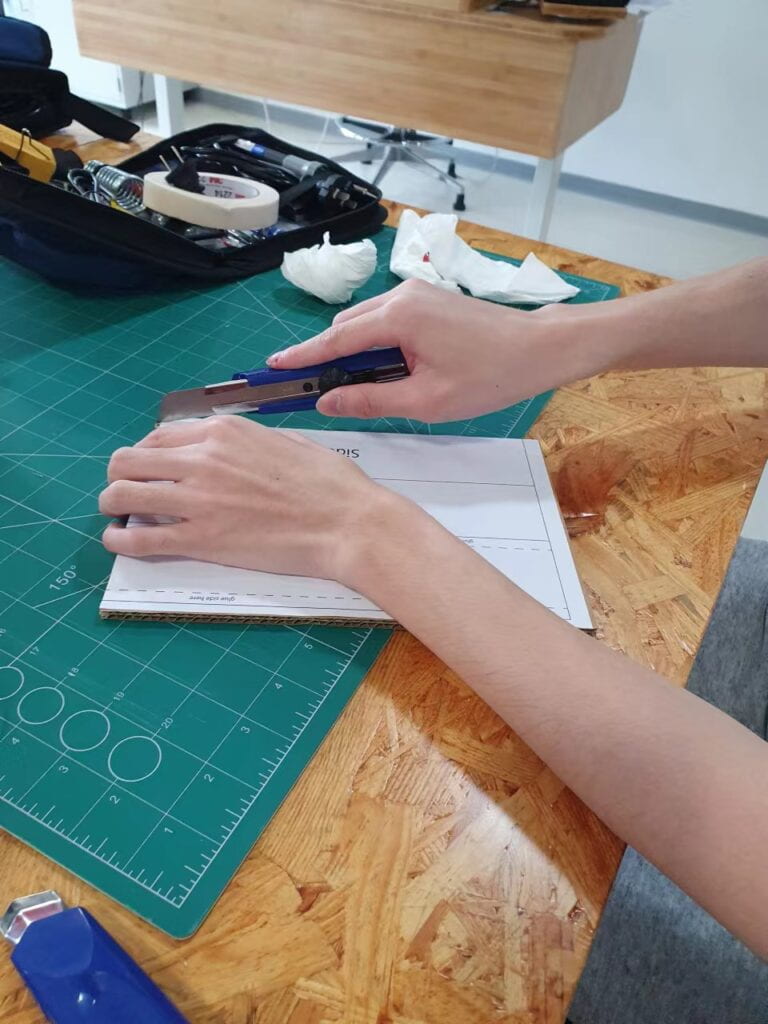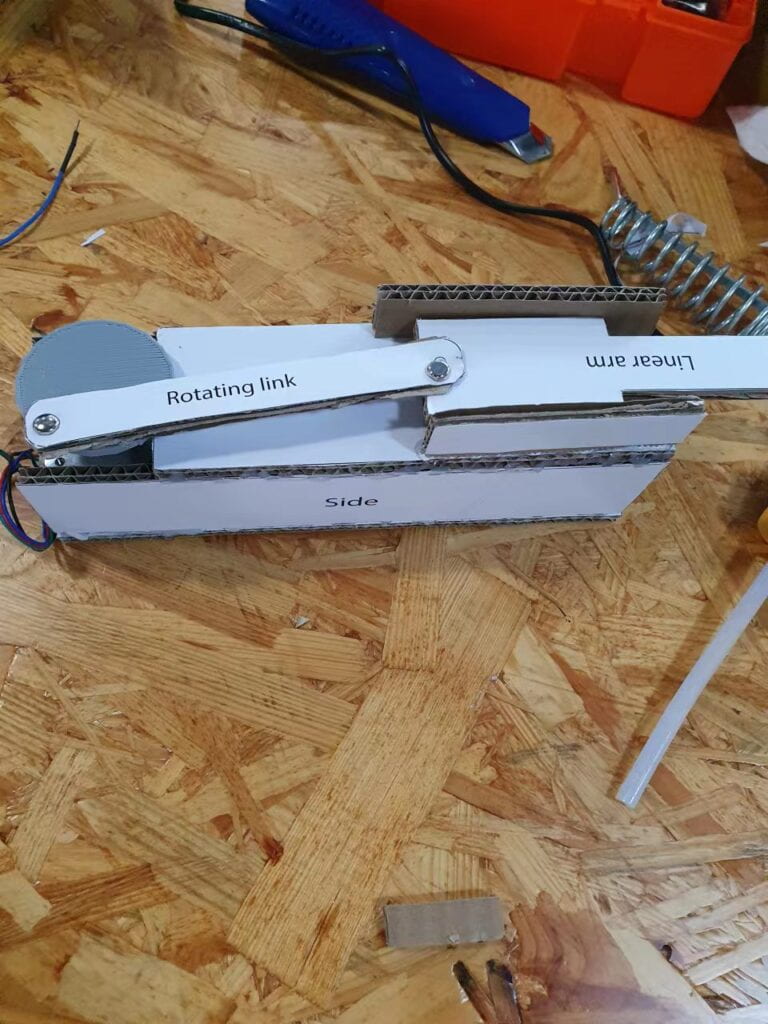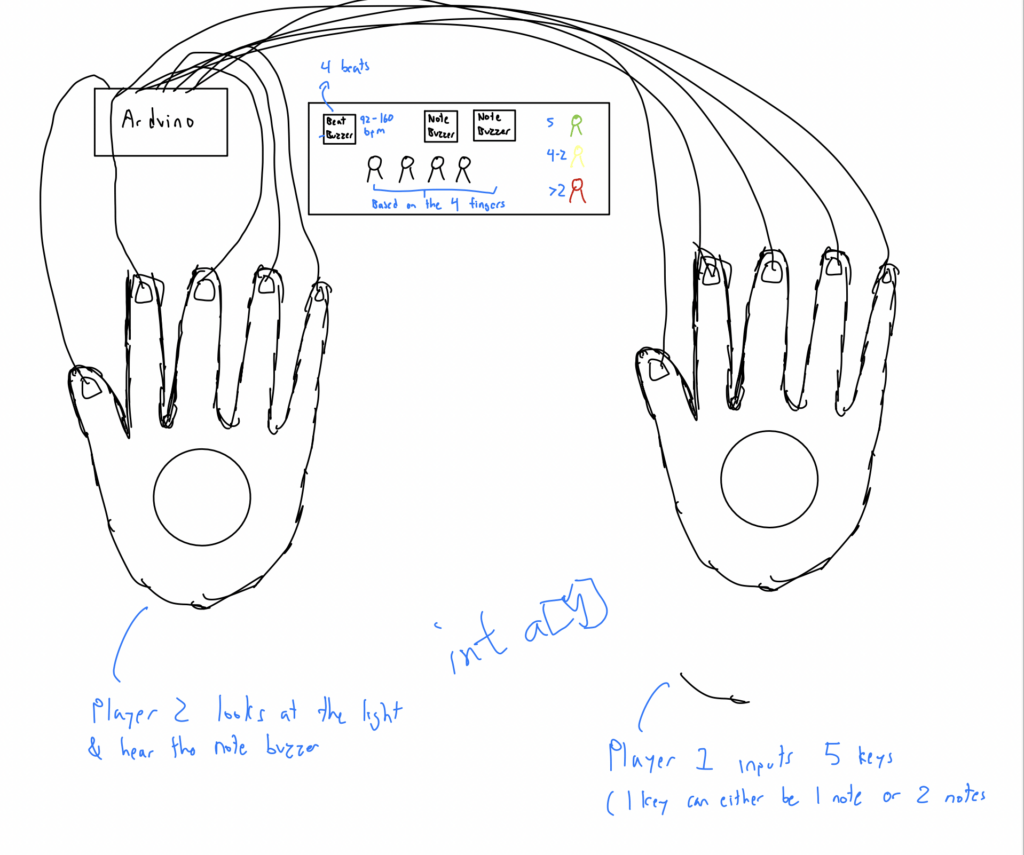Step 1: Build the circuit
In this step, my partner Stephen and I ran into some problems such as not knowing the name of each component and its functions. After some research and questions, we could figure out the general idea of what this recitation is about. We made sure to follow the hardware diagram carefully since we didn’t want to mess it up and figure out which part was wrong again, so we tried to do it right on the first try. In the end, it worked out in our favor.

Step 2: Build a cardboard mechanism!
We didn’t really run into any problems in this step because all we had to do was cut out the pieces of cardboard and assemble them together. However, the cutting part took the most time out of all the steps in this recitation.


Step 3: Personalize it
In this step, we added a triangle in the front of the machine and increase the rotation speed to its max. We also remove the counterclockwise code so that the machine would only spin one way.
Documentation
Question 1: Bill Vorn, Hysterical Machine, 2006
This machine that Bill Vorn made is similar to our recitation project because the legs that he used for the machine also use actuators that move back and forth and works as a joint, or an arm. The artist is likely to choose the actuator based on the function that he wants the part to do.
Question 2:
The mechanism I’m interested in building for my midterm includes a mechanism that functions on a glove. Me and my partner wanted to make a glove instrument that makes a sound, in which a mechanism that involves hand function would suit our project. Our motor will be different in that instead of using the finger and screen as the input and the output, we will use each finger and sensor as the input and the output. 